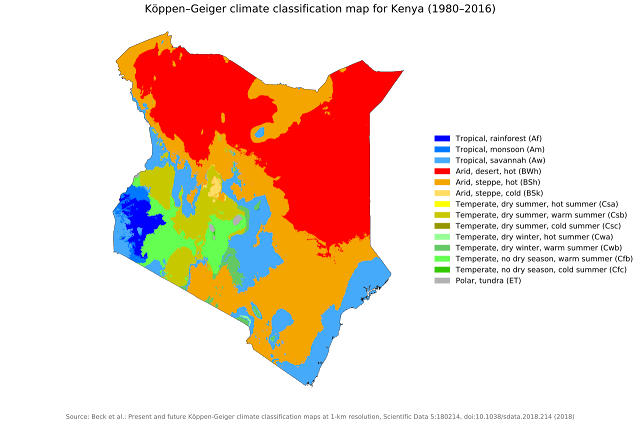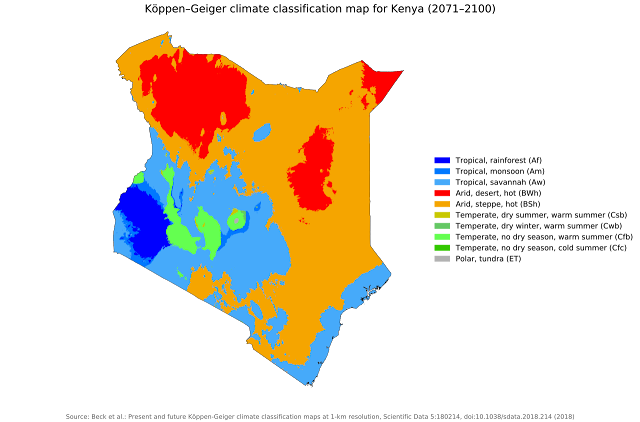As with many other African nations in already arid zones, water scarcity is the main threat posed by global warming in Kenya. Mean temperature in Kenya has risen fairly consistently with the rest of the planet over the past century, roughly 1°C/1.8°F, and is projected to continue. As is the pattern elsewhere on the globe, increased temperature will accelerate the water cycle, making wet regions wetter and dry regions drier. For Kenya this is projected to bring more rain, with the rainforest expanding and desert regions actually shrinking.
Köppen-Geiger climate zones 1980-2016
Despite this, it will become increasingly difficult for Kenya’s best-known macrofauna, such as lions, leopards and elephants to survive as their habitat shrinks between the forest and the dry zone with warming temperatures. Furthermore, Kenya’s already precarious agriculture industry, suffering already from periodic droughts and inconsistent production, will suffer as well. Lake Turkana, in the northwestern part of the country near Ethiopia, is in danger of drying up as that portion of Africa is expected to warm much more quickly than surrounding areas in the coming century.
Temperature anomaly, Kenya, 1951 - 2011
Annual CO2 emissions, Kenya, 1950 - 2021
The short rains from October to December have been becoming longer and more intense. Models predict this trend to continue, with erosion and flooding becoming an increasing problem. This is the conundrum around the world: increasing precipitation with increased warmth does not imply good growing conditions, as the higher levels of rain are likelier to have catastrophic, and not always beneficial, effects. In addition, sea-level rise is likely to inhibit growth in the coral reefs and mangroves along the coast.
Cumulative CO2 emissions, Kenya, 1950 - 2021
Per capita CO2 emissions, Kenya, 1950 - 2021.
As so many other developing countries with medium-sized economies–which describes most of Africa–Kenya is caught in a trap not of its own making. How best to manage the coming change without further destroying its own environment, for example by clearing forest for additional farmland, is the nearly impossible challenge faced by an inefficient government too often at the mercy of both global economic and local social interests.
Tomorrow: introduction to South America.
Be brave, and be well.











No comments:
Post a Comment